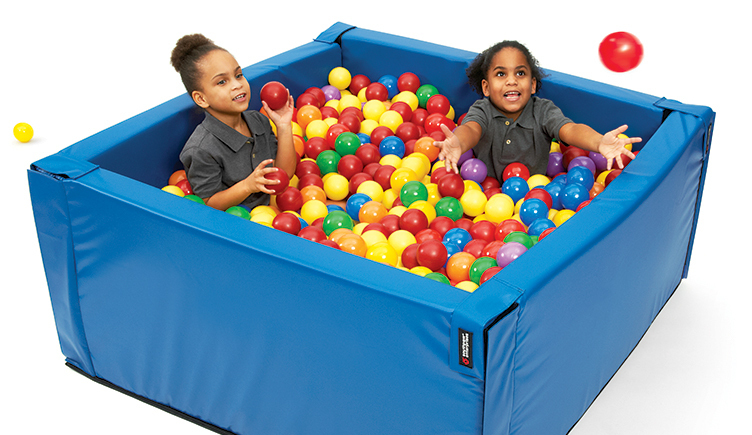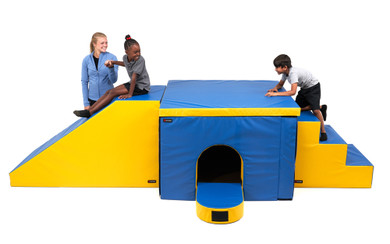Does your child avoid movement experiences? Is the child uncomfortable in positions where his/her head is tilted or feet are lifted off the ground? These types of responses can be a sign of gravitational insecurity.
One of the hallmark characteristics of gravitational insecurity in a child is an overreaction to or an irrational fear of movement (May-Benson, Lopes de Mello Gentil, & Teasdale, 2020). It is important to understand that we all respond to movement in unique ways. The challenge is when the level of response to movement affects a child’s ability to function. When a child purposely avoids movement, or has an overly strong response to (or anticipation of) movement, it fundamentally impedes the child’s ability to explore and learn from the environment. We know that exploration and interaction with the environment is critical for development. Sensitivity to movement has been associated with decreased participation in daily activities and fewer opportunities for socialization in children (Ismael, Lawson, & Hartwell, 2018). It has also been associated with affecting the social and emotional development of children with sensory integration dysfunction, along with affecting motor skill performance (Araman, 2022).
It is important to understand that the sympathetic nervous system is engaged when a child is stressed or anticipates danger (real or perceived) (Araman, 2022). The sympathetic nervous system is in control of the “fight or flight response” of the human body. Activation of the sympathetic nervous system releases adrenalin and cortisol, which prepare the body to fight or flee from the stressor. If the child perceives a type of movement experience as dangerous, the child will often take action to avoid the experience. This may include a paired negative emotional response along with the avoidance. The higher level of cortisol present, due to the stress reaction, inhibits the brain’s ability to learn or take in new information. This highlights the necessity of gradually introducing new movement experiences to the child.
Treatments for gravitational insecurity include providing the child with gradual, controlled movement experiences, which allow the child to feel safe. Parents should avoid trying to force the child into movement, but rather provide opportunities for the child to take movement “risks.” It can be as simple as placing a favorite toy on a stair and encouraging the child to retrieve the toy. Sometimes the child becomes so focused on the object that the previously uncomfortable movement or position is achieved with minimal to no discomfort, due to the distraction. This allows the child to experience the position or movement without a negative reaction. Positive reinforcement is highly recommended when a child successfully achieves a new movement experience. This can help the child become more confident in navigating movement experiences.
The Southpaw Playhouse provides multiple opportunities for a child to explore stairs, climb to various heights and slide down the slide, all on a padded surface. Its bright and attractive colors invite the child to explore its surfaces and features. The Southpaw Jump and Play Island provides opportunities for the child to experiment with movement while allowing for the security of being able to hold on to the vertical poles for stability while moving. The inner tube on which the child stands supplies a controlled challenge to navigate the shifting surface underfoot during movement. The overall key is to finding the best movement experiences, which challenge the child, but do not overstress the child. Keeping the sympathetic nervous system from fully activating will result in positive experiences for both the parent and the child.
References
Araman, Z. (2022). Evaluation of Gravitational Insecurity in School-Age Children Diagnosed with Learning Disorder. International Journal of Scientific Research and Management, 10, https://doi.org/10.18535/ijsrm/v10i03.mp03.
Ismael, N., Lawson, L. M., & Hartwell, J. (2018). Relationship between sensory processing and participation in daily occupations for children with autism spectrum disorder: A systematic review of studies that used Dunn’s sensory processing framework. American Journal of Occupational Therapy, 72, 7203205030. https://doi. org/10.5014/ajot.2018.024075
May-Benson, T. A., Lopes de Mello Gentil, J. & Teasdale, A. (2020). Characteristics and Prevalence of Gravitational Insecurity in Children with Sensory Processing Dysfunction, Research in Developmental Disabilities, 101, 103640, https://doi.org/10.1016/j.ridd.2020.103640.



